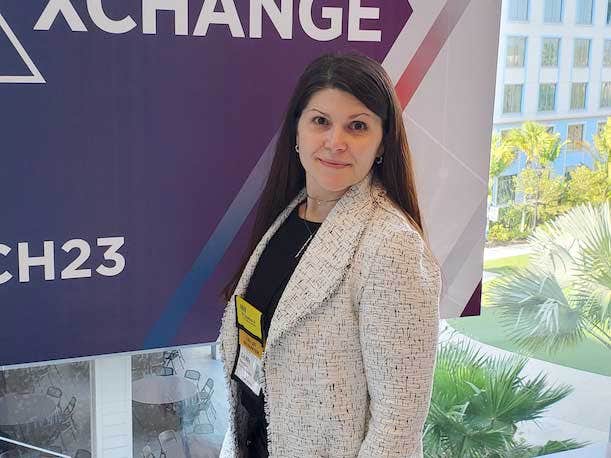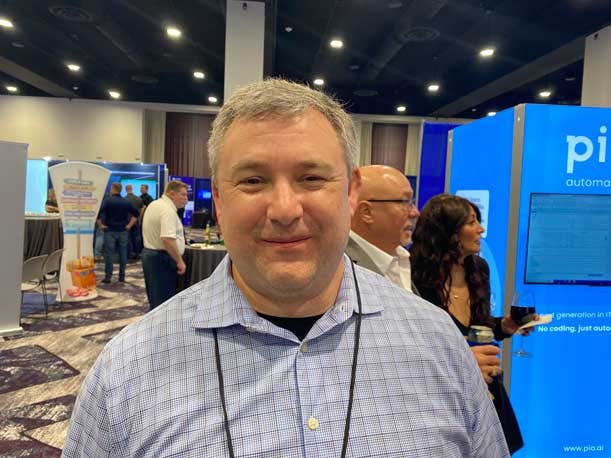MSPs Speak Out: How Vendor Relationships Have Changed Post-Pandemic
At XChange March 2023 this week, CRN reporters asked MSPs in attendance whether they are seeing vendors changing how they are doing business with them in a post-COVID world and whether the changes have been helpful or not. Here’s what they had to say.

The past three years have presented an array of obstacles for MSPs, including how to equip their customers with solutions to help their employees work from home—in some cases, making the transition overnight—to how to manage tightened IT budgets and global supply chain shortages. And while many MSPs have been resilient through the upheaval, many vendors and suppliers have had to make changes to their business. Some of these changes have been for the good, such as directing more resources toward the channel or relying more heavily on MSPs to help cut down their backlogs and fulfill IT projects. Other changes, however, have not been very popular or appreciated, including price hikes, the laying off of indirect sales personnel, which has created communication gaps between the company and its channel partners, and long lead times as a result of supply chain challenges.
At CRN parent The Channel Company’s XChange 2023 event this week in Orlando, Fla., reporters on the ground asked MSPs in attendance this question: In a post-COVID world, are suppliers or vendors changing how they are doing business with you in a way that’s helpful for your business, and have there been any changes you don’t like?
Here’s what MSPs in attendance had to say.

Dawn Sizer, CEO, 3rd Element Consulting
Vendors are getting pushier [with] their sales process. That has not been comfortable for anyone involved. To give you an idea, it’s not uncommon [for me] to get 400 emails a day—sales emails. And that’s from LinkedIn, regular email, you name it. I’ve literally had to take myself off our phone directory so that people would stop calling me. That’s how bad it has gotten. That’s the post-COVID world of sales. I think some of them are trying to build relationships. And I think that is working very, very well for them. Some of them have not gotten that memo yet. So, this is their memo: Please go build relationships and stop filling my email box. Because I’m not going to reply to you. But anytime that you have a personal relationship with folks, I think you’re more open to any sales conversation that there is to be had. They’re doing themselves a service by building that relationship. Because if one of my vendor’s salespeople calls me up, I’m going to take the call.

Brian Martz, President, TechGuides
They are changing the way they do business with us, and I think it’s in a positive way. They’re more flexible and they have more ramp-up time to get new solutions rolled out, especially with cybersecurity. You can’t roll out 2,000 endpoints in 30 days, so they’ve given you six months-plus to ramp things up and get your cybersecurity stack rolling.

Phil Cardone, Owner, Radius IT Solutions
I’m finding that it’s changing more toward me not liking it. There’s more and more subscription models and more and more contracts. Everything is a subscription and it’s just adding to the overall costs. [They should] pick bulk numbers and just say, ‘OK, up to 50 users is a price, up to 100 is a price.’ Not every single user is a hard price. It’s just costing people way too much money to leverage all of these different pieces together.

Roddy Bergeron, CISO, Enterprise Data Concepts
I think a lot of the vendors are starting to see MSPs as part of their sales team. That’s a good thing. There’s a relationship we have to have with vendors where we don’t want them coming into our space because we don’t want to have to sell against them. But we also need their support. And if you’re a vendor, when you can enable an MSP to sell and grow, that’s more money in your pocket and you’re not paying a salesperson. So I see that transition. I also see a lot more transition out of the traditional sales [approach] of, ‘Hey, here’s a great tool we have’ to [an] education-first [approach]. Don’t try and sell me. Educate and help me to learn first. Then from that, help me find my pain points. And then, the last thing you want to do is sell. I think that idea is starting to catch on a little bit.

James Payne, CEO, J&S Technology Solutions
I wouldn’t say we’ve really seen a change with most of our vendors. Supply chains were a little weird for a while there. But beyond that, there’s been no real change for anything for us. We use TD Synnex, we use D&H, and the cloud providers. They can just deliver immediately. So that really hasn’t changed for us.
I think what’s probably changed for us is just the resources and things that might have been on the fence for us pre-COVID and during COVID, like Voice-over-IP services. We saw a big implementation on that as people went home to work with Microsoft Teams and all of those collaborative-type tools and remote tools. We saw huge surges in that, and from a vendor perspective, they were ready to deliver. Microsoft was awesome. I mean, they opened Teams up just like that, which obviously was to their business advantage. And Zoom was kind of doing the same thing.
Vendor response is pretty much the same for us. I mean,our interactions were pretty much the same, if not a little better, [during the pandemic].

Harvey Green III, President, CEO, XenTegra Gov
[Vendors] have tried to do a better job stocking things. A lot of them have tried to do a better job of quality control during manufacturing. Those are the big ones. Over-rotating and removing their sales force. Lots of churn. From a partner standpoint, there is a lot more on our plates than before as a result. So the partners have to grow to support more vendors and suppliers. Ultimately, they offloaded risk.

Marc Menzies, President, CTO, Overview Technology Solutions
What I’ve really found is a lot of solution providers in general are in a better position to sell regionally and nationally than they used to. So if a client moves somewhere, for whatever reason, that used to be very difficult for a solution provider to handle—maybe they have to refer that business to someone else. Now a lot of times they can handle it internally.
[As a result] I think [vendors] are dedicating more resources to partners, and the reason I think that they are is because now that we MSPs have a much larger footprint than we used to be able to we’re able to take on more business. And there’s less likelihood at this point that a client would go direct to a vendor try and do something themselves. Somebody DIY-ing a situation like, ‘I put in a server, I did this, I did that’—that’s not a thing anymore. We’ve found that companies are much more likely to reach out to a solution provider than not. And because of that, vendors have been pouring resources into the channel. Especially in terms of what their support for us is like now, they’ve listened to us.

Tanaz Choudhury, President, Tanches Global Management
[Vendors] are raising prices, if there’s something that’s delayed, or they’ve made a mistake, it’s always ‘a supply chain issue,’ which it isn’t always. But it’s not going to be any different from any other MSP. We’re going through the same thing. Like right now I have an order, which [a vendor] was supposed to propagate last week and they’ve just not done it. A large distributor is managing that, and I gave them an ultimatum saying, ‘If you can’t do this within 24 hours today and if I don’t get a written confirmation on this, I am moving this business to somebody else.’ You just have to do what you have to do.
Along with that, you’re also going to see the rise of … smaller distributors. So, there’s opportunity in this sort of ruffled economy, ruffled environment. Smaller distributors are now suddenly coming up to the forefront and shining. If they can deliver better service, deliver things on time, and give decent pricing, you’re going to see a shift toward that.

Staale Thomas-Swift, President, CEO, NOCDOC
[Vendors] have moved more towards a utility model, as a service. In subscriptions, instead of annual subscriptions, it’s monthly subscriptions. Working across the line with all the MSPs we work with, that’s what we’ve seen. You, the MSP, buys a bundle, then you resell it as you want to the client. It’s fine for us. We’ve gone from long engagements to month to month, it’s more of a utility model on our end as well.

Joe Kadlec, VP, Sr. Partner, Consiliant Technologies
We’re salespeople at heart. So we’re used to face-to-face interactions. And we got away from that. And I think that’s hurt us on the supplier-side relationships as well as with customers. So it seems that a lot of people now hide behind a computer screen, whereas before we could get things done face-to-face. And I think there’s been a lot of transition with people in some of these big organizations, either getting laid off or they’re leaving the organization. And so it’s been harder sometimes to get answers to questions. And luckily, we’re fairly self-sufficient.
On the distribution side, the biggest thing that has impacted us has just been supply chains and being able to get our hands on gear. So our inventory has increased dramatically because we can’t order stuff and have it delivered in a couple of days. Actually, we’re buying more in advance and warehousing it. Very expensive. Like literally, we’re probably 4X what we normally should carry. And some of that has come from business expansion. But the rest is because we might not be able to service our customers. We have to be able to build technology and ship it and do it very quickly. That’s our value-add. So, we’re now a Dell OEM and also build HP servers for a large energy company. We can turn servers around in a day or two days.